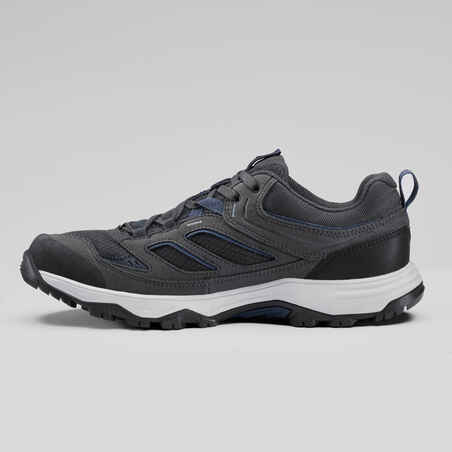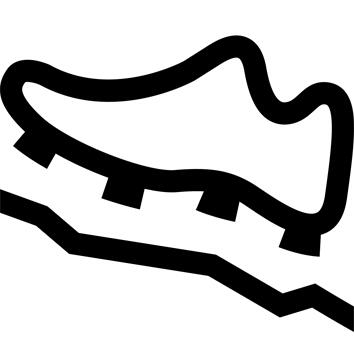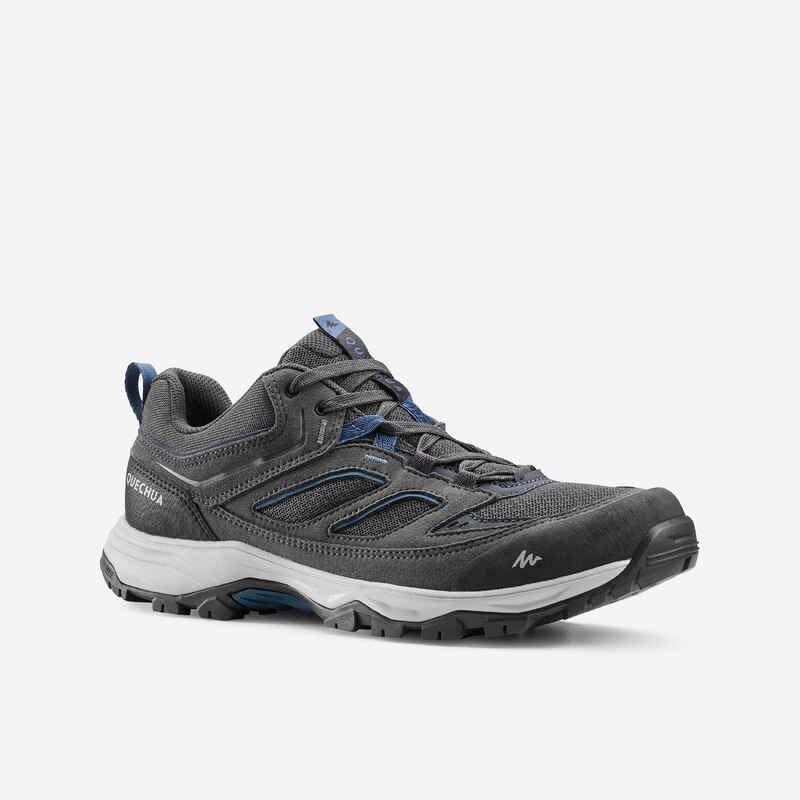WHAT IS YOUR HIKING FREQUENCY AND INTENSITY?
We have classified our products in terms of performance and features for 3 levels of Mountain Walking:
- occasional: about 10 hikes per year of about 3 to 4 hours in length, covering less than 10km and less than 700m in elevation gain.
- Regular: about 20 outings per year. 4 to 6 hours, 10 to 20 km, 700 to 1200m of elevation gain per outing.
- Intensive: more than 20 times a year. More than 6 hours, more than 20 km, 1200 to 2000m of elevation gain per outing.
SOLE WITH GRIP
The grip of our soles is certified. To be awarded certification, the boots must pass laboratory tests to assess the grip rate on different surfaces (Smooth, Rugged, Dry, Wet). To validate these tests, we assess the quality of our soles in the field, in the mountains, by a panel of representative testers over 500 km
Which size should I select?
The most important thing is to try on several sizes and styles of boots to find the one most suited to you!
You can take a size above your usual one to prevent the toes from bumping into the toe box when going downhill, provided the foot is properly supported to avoid friction.
Tip: keep your toenails short and, before a long descent, check that your lacing is tight enough to prevent your foot from sliding forwards inside the boot.
BUYING TIPS / HOW DO YOU TRY YOUR BOOTS ON?
Some Decathlon stores have a test route.
1. Try on both shoes, standing up, with the socks worn for hiking.
2. Tighten the laces, taking care to correctly balance the tightening.
3. Check two points:
- the heel does not come up before the shoe when you walk uphill.
- the foot does not slide and the toes do not press against the front when going downhill.
4. Try on several sizes and models.
Break them in gradually to adapt them to your foot.
Optimise the capabilities of your boots: replace your insoles!
The original insole in your shoes is designed to accommodate most feet. A change of insole can bring:
1. Improved support: some soles are preformed or reinforced to better support the arch of the foot.
2. More comfort: the insoles can also provide heat and/or cushioning.
3. Longer life: restore the support and comfort of your shoes by replacing the insole each season.
How should you look after your shoes?
- Leave to air dry.
- Remove dry mud with a stiff brush.
- Clean marks using a brush and some warm water
- Leave to dry
- Spray with a re-waterproofing product to restore the water-resistance to the upper.
HOW DO YOU AVOID BLISTERS?
Discover all our tips here:
https://conseilsport.decathlon.fr/conseils/9-astuces-pour-eviter-les-ampoules-tp_10725
























